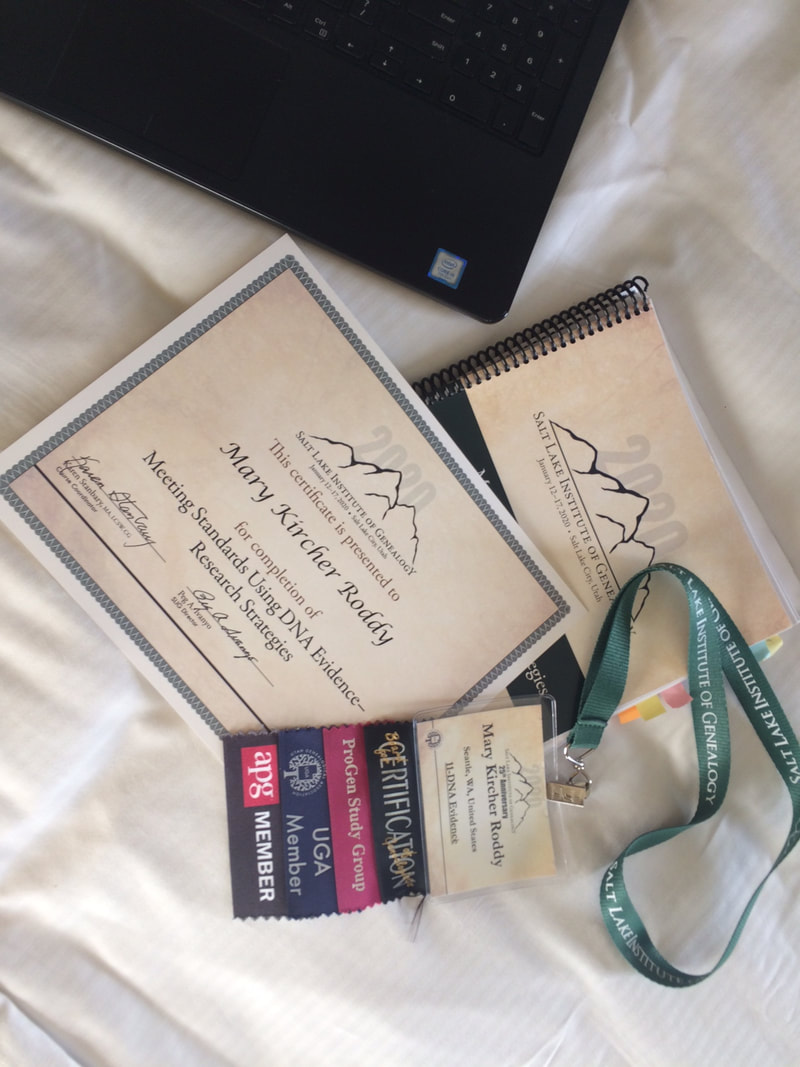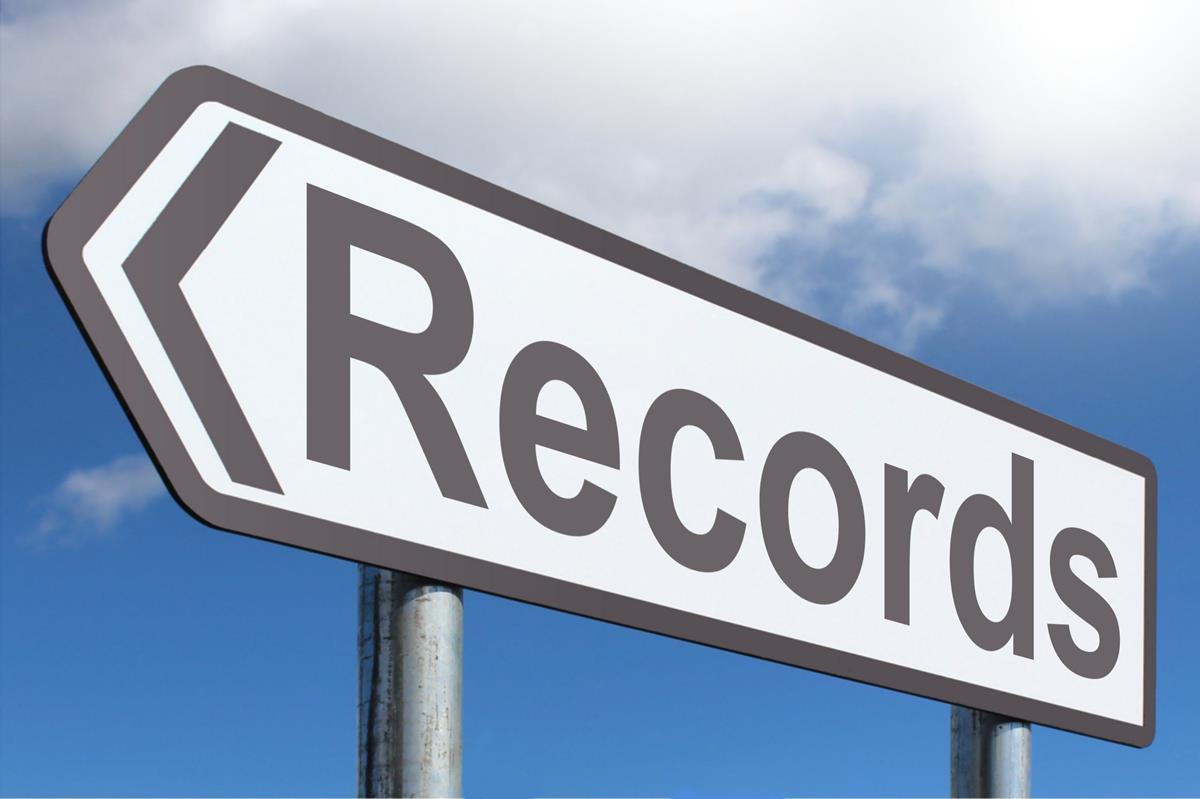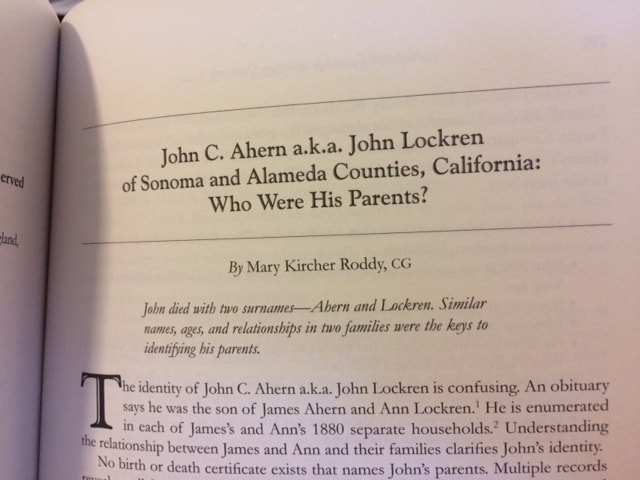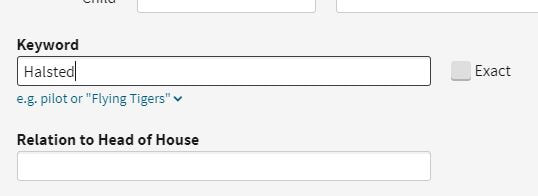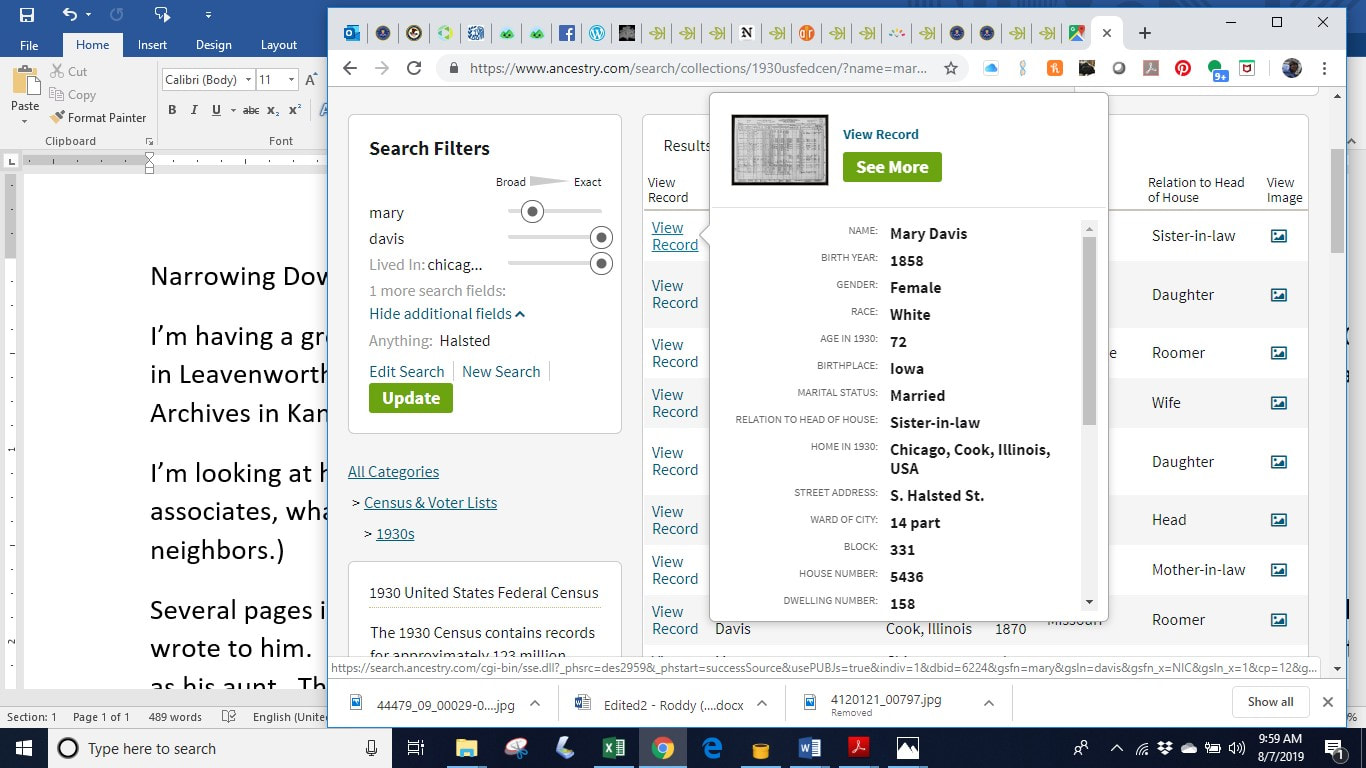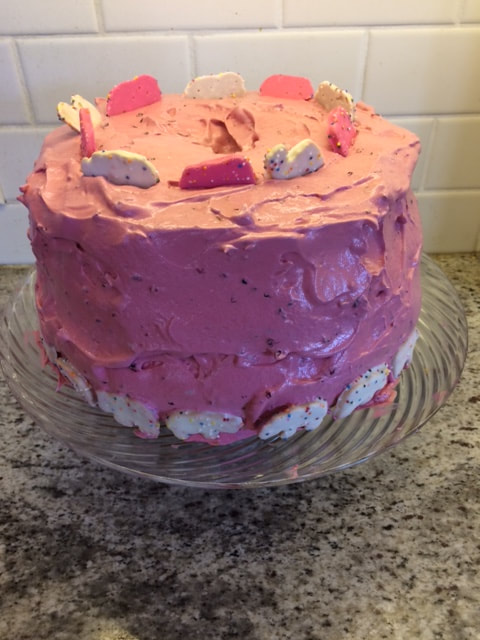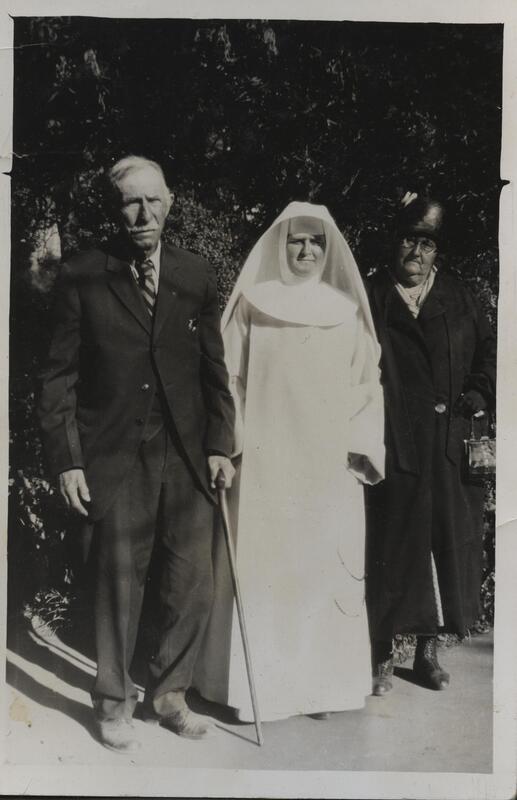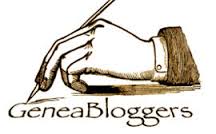|
I hate to recycle content. I wrote “A Call to Action,” two months ago. But it is sooo important, particularly for my fellow SLIG 2020 graduates.
Before you pack your syllabus for your trip home, before you stick it on your shelf when you arrive there, open it to the inside of the cover and answer this question – “What is your plan for continued advancement in 2020, 2021 and 2022?”
As I reflect in the next few days I’m sure I’ll find a few more plans and goals. How about you, fellow SLIGsters - What is your plan?
1 Comment
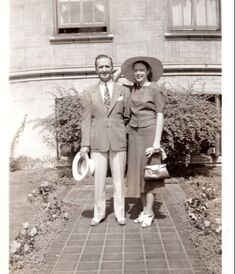 Charles Olin aka Charles Melville and wife, Ethel. (Photo was a gift to me from his niece). My problem for the think-tank was determining how this guy might be related to my family. Charles Olin aka Charles Melville and wife, Ethel. (Photo was a gift to me from his niece). My problem for the think-tank was determining how this guy might be related to my family. A teacher turns over the classroom. This week at SLIG, I’m taking “Meeting Standards with DNA Evidence.” Karen Stanbary CG® is the course coordinator. She has taught several sessions, but joining her is an all-star cast. Each day we have had at least one or two other instructors. Today we had LaBrenda Garrett-Nelson, CG® and David Rencher, AG® CG®. It has been wonderful to see genealogical problems presented by such high caliber speakers this week. Each has shed light on how to approach a problem, decide when DNA testing might be appropriate, determine what kind of DNA test(s) could be most useful, establish how to organize the massive amounts of data, define what the assumptions being made are, and more. I have so enjoyed the chance to visualize a genealogical problem and its solution from each of their perspective. Each has shone light from a slightly different angle. But Karen has taken this a step further. She went out on a limb with “DNA Dreamers,” an optional session at the end of the day where students were invited to present their own research, and have their classmates in the “think-tank” suggest additional research strategies and come up with recommended next steps. I was lucky enough to get to share my problem. On tap for next week – put some of those suggestions to the test. Thank you Karen for having the vision and courage to try something new. It has definitely enhanced my learning experience! Certified Genealogist and CG are proprietary service marks of the Board for Certification of Genealogists, whose name is a registered trademark. The Accredited Genealogist® and AG® registered marks are the sole property of the International Commission for the Accreditation of Professional Genealogists. 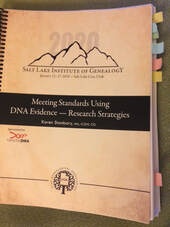 Great day today. I’m learning a ton in class, but it’s wonderful to also be able to take the opportunity to network. At lunch I showed my friend how I use a spreadsheet to help me with my citations for a large project such as a Kinship Determination Project, one of the elements in a portfolio for certification. I can sort my citations in a spreadsheet which serves three purposes – I can make sure like-types of citations are consistent from one to another, I can easily see when I use the same citation a second or third time and need to make it a subsequent (short) citation, and I have models that I can easily copy and edit for other uses. Another friend came to say hello, and seeing what I was doing, encouraged me to try to find a way to share this with other genealogist. Hmmm…knowing someone is interested in the way I do things has encouraged me to think about a new business venture. Definitely something to work toward. I had an invitation for dinner with my friend Kristen who lives in the opposite corner of the country. It’s nice to get to see her at a genealogy event or two every year. Another friend of Kristen, Susan, also joined us. And now I have a new friend! From Pennsylvania. Who knows all about the wonderful resources at the Blairsville Historical Society – in the exact locations where I recently discovered a whole bunch of new relatives! I’ve got some planning to do. And this evening we were treated to a networking social at SLIG, were I met more new people and had a chance to visit with some old friends. It made for a very nice evening. One more little bit I want to share. We are given a bound syllabus, 220+ pages for our course. I realized on day one that there would be a couple of pages – the table of contents and the schedule for the week – that I’d want to refer to frequently. I had a little book of sticky-tabs that were a promo item from another conference I attended stuck in my computer bag. I used blue ones on those two pages. But the next day, as I took a note on a page, I thought “This would make a good blog post.” On another one, “Hmmm, here’s a resource I should investigate.” Let’s see… I’ve got lots of tab colors – I can use green ones from blog ideas, pink for personal research, and for those “golden nuggets” our instructor wants us to keep track of, I’ve got yellow ones. I’m going to make sure at future conferences, I’ll bring book of tiny colored post-it flags to make my syllabus review that much easier.  I signed up to take a class at SLIG – “Meeting Standards Using DNA Evidence – Research Strategies.” I’m not sure what I thought it was going to be. More about writing, I think. I’m so glad I was wrong. I signed up for the class because I thought I was going to learn how to write up my DNA research. I am getting so much more than I bargained for. It’s two word, right up there in the front of the title, “Meeting Standards.” Karen Stanbary, CG® is the facilitator. In addition to her deep knowledge, other teachers today included Catherine B. W. Desmarais, Melissa A. Johnson, Thomas W. Jones, Angela Packer McGhie, and Richard G. Sayre, all of them credentialed by the Board for Certification of Genealogists. We have more instructors taking center stage in the next couple of days. With each of new, I’ve had the chance to see how they plan and execute their research in order to meet the standards. I see the choices they made and hear their explanation about why they made those choices in that particular case. And what they might do differently next time. It’s been a great couple of days of learning. I can’t wait til tomorrow to fit more pieces into my brain. Certified Genealogist and CG are proprietary service marks of the Board for Certification of Genealogists, whose name is a registered trademark. 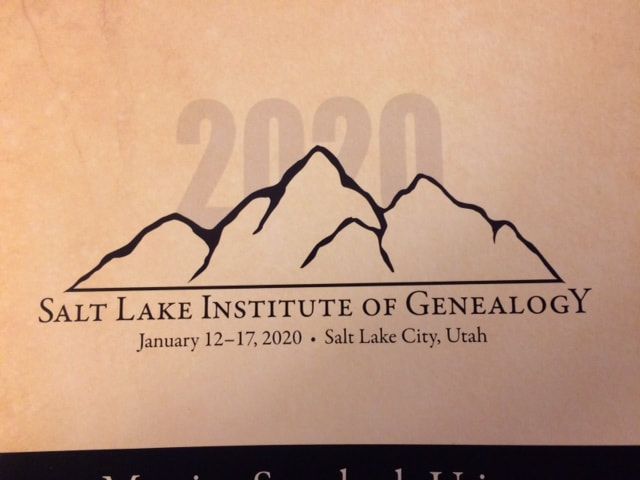 The Salt Lake Institute of Genealogy – SLIG !- I’m finally here! I arrived last evening. My flight from Seattle was nice, with an empty seat beside me. We arrived early. Things were great. And then there was BAGGAGE CLAIM. Several of my fellow travelers shared the dreaded luggage fiasco – we were in Salt Lake City but our bags were in Seattle. Alaska Airlines promised they’d deliver the bag to my hotel, whenever it arrived. So suitcase-less I hopped on TRAX, the local lightrail to get downtown. I got off at the nearest stop, walked the block and half to the hotel, rode the elevator up to the conference floor and entered the ballroom for the orientation at 5:29, one minute before the start of the orientation session. And at 5:38, my pulse rate down to normal, I looked around my seat… under my coat… next to my backpack… and I had... no purse. I think I must have left it on TRAX. On Sunday evening, calls to the TRAX lost and found went to voicemail. I’d just have to wait til Monday morning to talk to someone. I posted my tale of woe on the SLIG facebook group, told a few friends and in minutes my phone messenger app was filling up with so many offers of support – “I’m sending my husband with cash – what room are you in?” “I’ve got a Starbucks card for you.” “Can I do anything for you?” “I can lend you a spare set of pajamas” and more… This is such a wonderful community. Attending my fifth SLIG, I’m greeted with warm hugs and beaming smiles. I love coming here. And after the wonderful offers of support in my time of stress I love it even more. My suitcase did (finally) show up, late late late last night. Still hoping for a good word on the purse. But I know that any twinge of sadness if my purse remains lost will fade to nothing as I continue to bask in the warm embrace of this wonderful genealogical community. I’m nearly finished with a six-week course, the All-DNA Advanced Evidence Analysis Practicum, one of the Salt Lake Institute of Genealogy’s offerings. Each Saturday we get a new puzzle and have six days to come up with the solution. (I have a stack of Sunday crosswords sorely in need of my attention. It seems I’m too excited about the real-life DNA puzzles I’ve been working on.) On the following Saturday, the instructor walks us through their solution in a guided discussion. And then a new instructor comes to the mound and pitches the next mystery.
I like this class on so many levels. We’re getting case studies and solutions from some of the top DNA instructors in the country. My fellow students aren’t too shabby either. Some have been willing to share their solutions, which gives me a peek into another genealogist’s mind about how they went about tackling the problem. In their reports I learn different ways to set up tables and present data, as well as verbiage to try to succinctly explain some challenging concepts. We;re learning about new tools to use to solve our problems. One of my favorite reasons, however, has to do with record sets. Studying groups of people sharing DNA with one another is only part of the solution. Documentary sources in which our ancestors and those of our matches appear must also be studied to determine which people were in the correct location to create the exact chromosomal combination in our mystery person. I think I’ve looked at records from close to 20 different states and a few countries to solve the five cases in the practicum. Some locations appear in my own family’s history. Some record types are part of my regular playlist. But in working through these problems I’ve been exposed to record sets I’ve never used. One recent case used a particular record set in a particular county of Pennsylvania I hadn’t ever used. I have several family lines of my own (and ones I’ve researched with my dear friend, Barb, the person who sucked me into the fascinating world of genealogy). As researched the DNA case I made a mental note to see which other Pennsylvania counties had records in that same set. As it turns out, A LOT! I’ve now got a whole list of Pennsylvania township assessment records from a whole list of Pennsylvania counties to follow-up on. Maybe, just maybe, I can make some headway on Barb’s brick wall ancestor. I think you should expect to learn something in every class you take. And if you’re lucky you might learn something – a new record set, for instance – that you never expected to learn. For more about attending SLIG, click here. Disclaimer – The Salt Lake Institute of Genealogy has provided me a discount on my SLIG 2020 tuition for my participation as a SLIG ambassador.. The opinions expressed are my own. 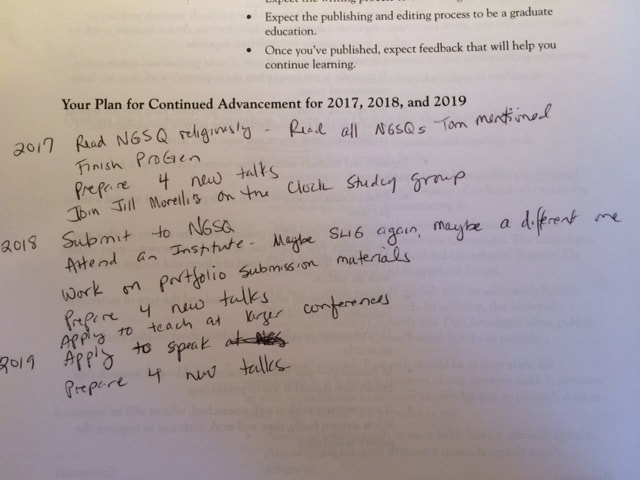 In January 2017 I took Thomas W. Jones’s “Advanced Genealogical Methods” course at SLIG. In his last session, “Continued Advancement,” he presented options and suggestions for continuing education. The final half-page of the syllabus material for that presentation was a big blank space beneath the words, “Your Plan for Continued Advancement for 2017, 2018, and 2019.” It was a call to action - what are you going to do, Mary Roddy, to become a better genealogist?! My plan: 2017:
When I enrolled in Tom’s course, I had no intention of becoming certified. I’m already a Certified Public Accountant – what did I need another certification for? But after a week of inspiration, I came away thinking, “Hmmm, I do that… I do that… I do that… I don’t do that, but I could. I might just have certification in my future.“ The seed was planted. So how did I do on my list? Numbers 3, 8 and 10 – I probably didn’t quite make this goal of 12 new talks, but I do have several completed and some in the works, so I feel OK about that one. Items 4 and 7 – Check. Jill’s Certification Discussion Group (I guess I didn’t even know what it was called when I made my original list), watered the seed Tom planted. She demystified the process and made me feel certification was a goal I probably had the skills to achieve, and her structure gave me a plan. I did work in 2018 (and 2019) on my portfolio. What is noticeably absent from my plan is actually submitting a portfolio. But you know what? I did it anyway, and I passed! I submitted my portfolio in May 2019 and got the good word in July. Item 6 – I have a couple more SLIGs and a GRIP under my belt. And more SLIGs to come. Obviously I think institutes are an integral part of my genealogical improvement plan. Item 9 – I continue to submit to national and state conferences and I was lucky enough to be selected to speak at the NGS conference in 2019. I had a great time, and learned so much. Item 5 – Submitting to the NGSQ. This is the one I’m super excited about. I was taught how to string words together many years ago, and I really enjoy the process of writing. But until I took Tom’s course, I never thought about submitting to a peer-reviewed journal. In his five days of teaching, and picking apart several NGSQ articles, I realized, yeah, I could probably do something like that. A couple of colleagues encouraged me to submit my ProGen case study, and luckily the editors were interested! The editorial process was lengthy – first I had to address comments from three peer reviewers. There were holes in my research I needed to fill, but their suggestions served me well as I tackled other genealogical problems, and they ultimately gave me a stronger foundation when it came time to submit my portfolio. The opportunity to get expert opinions on my work was priceless! (And free! Get professional critiques for free - that’s a win in my book!) And then I waited, and waited, and waited. And finally, the editor contacted me to make more changes, corrections, and clarification, but he had space for the article in the upcoming issue. And this morning, the latest issue of the NGSQ with my article, “John C. Ahern a.k.a. John Lockren of Sonoma and Alameda Counties, California: Who Were His Parents?” arrived in my mailbox. I think I did pretty well accomplishing those 10 plans I made in January 2017. Tom Jones gave me a call to action, and I’d like to pass that on to institute instructors and students alike. Teachers, as you’re wrapping things up in the last session of class, give your students five minutes to think about how they’re going to apply their new-found knowledge. And students – even if your instructor doesn’t formally encourage you to make a plan, I’m pretty sure the inside cover of the back of your syllabus is blank and is the perfect place to set down your goals. Do it! For more about attending SLIG, click here. Disclaimer – The Salt Lake Institute of Genealogy has provided me a discount on my SLIG 2020 tuition for my participation as a SLIG ambassador.. The opinions expressed are my own.  One of the great things about attending an institute is connecting with your classmates. Meeting those shiny faces Monday morning - and maybe watching their features slowly deteriorate into the same haggard face you see in your own mirror Friday morning when your brain is so full you don’t think you can cram one more bit of learning in – you will forever share that bond. And you’ll make great connections. Because institutes tend to attract people from all over the US as well as many foreign countries, you’ll find yourself rubbing shoulders with genealogists with expertise in many locales. Some of those places are sure to be where your ancestors or other research subjects lived. In one course I took, I met Steve. He spearheaded a county court records indexing scheme in his local genealogy society. And when I needed a look-up in that index, I knew just who to call. In another course, I met Kathy, who lives all the way across the country from me. She was there when I reached out this week, trying to see what she knew about 1880s era newspapers in her state - their coverage, and even their fonts and column layout. She’s a great resource as I try to discover the identity of the mystery woman from the newspaper clipping in my great aunt Ida’s scrapbook. I hope a few of my fellow students over the years might feel the same about some of the help I’ve been lucky to share with them. When you think about institutes, the top-notch instructors are only part of the learning equation. The students next to you are just as valuable. I hope I find one of you in a neighboring chair at my next institute. For more about attending SLIG, click here. Disclaimer – The Salt Lake Institute of Genealogy has provided me a discount on my SLIG 2020 tuition for my participation as a SLIG ambassador.. The opinions expressed are my own. I’m having a great time these days researching a convicted counterfeiter who served time in the 1930s in Leavenworth Federal Penitentiary. I dropped a bundle ordering his 191-page file from the National Archives in Kansas City, but it may be worth it in entertainment value alone. But I digress… I’m looking at his file and trying to build a profile of him. Part of that includes developing a list of associates, what Elizabeth Shown Mills refers to as a “FAN club” (family and friends, associates, and neighbors.) Several pages in his file have to do with his correspondence while in prison – who he wrote to and who wrote to him. One such contact was a woman, Mrs. Mary Davis of 5644 Halsted Ave, Chicago, identified as his aunt. The correspondence form was stamped “1929.” I thought I might try to find Mary Davis on the 1930 census to see if I could find a clue as to how she might have been his aunt – through his father’s side or his mother’s. I searched on Ancestry for Mary Davis in Chicago, Cook, Illinois in the 1930 US Federal census and got 200 hits. Ugh. Some were far too young to be the aunt of my 42-year-old prisoner. But there were still a lot of hits to go through. On Ancestry’s list of possible results there are six data columns shown: name, parent or spouse name, home in 1930, birth year, birthplace and relation to head of house. Another column on Ancestry’s display says “View Record.” If you hover your cursor over an item in that column, a pop-up window appears showing 15 additional data items plus a list of household members. Ancestry’s basic display only gives six data points, but they have indexed another 15. Think about that. If they’ve indexed them, you can search on them. These additional fields include things like ward of the city and dwelling number (which most people wouldn’t know), but also parents’ birthplace. And street name! I knew from the correspondence log from the prison file that Frank’s aunt Mary Davis lived on Halsted Avenue. I went back to Ancestry and edited the search, adding “Halsted” in the keyword box and now my top result is Mary Davis, born 1858 in Iowa, living at 5436 Halsted. The house number is slightly different than the one on the prison log, but this is a very likely candidate for my guy’s aunt. The take-away – remember to use that Keyword box when searching on Ancestry. It will help you to quickly winnow down a long list of results. Many of those details you see in the pop-up window which appears when you hover over a potential result can be searched using Keyword. Play around also with checking the “exact” box which appears when you use the Keyword field. Now, I’m off to learn everything I can about Mary Davis! Don’t you just love the delicious scent of blackberries this time of year? When the afternoon sun warms the juice in that little clump of beads, the sweet smell fills the air. My family has a special cake, Circus Cake, for which a key ingredient is that delicious fruit. I don’t know when it became a family tradition, but I know my Dad talked about eating it as a boy in the late 1920s. Several years ago, I smelled those wonderful berries and I really really really wanted to make it. I could not find the recipe. I contacted all my siblings and cousins, but no one seemed to have the recipe. I scoured the internet in old cookbooks and newspapers but could not find what I was looking for. Fast forward to May 2019. I received a sheepish phone call from my Auntie Helen, “Mary Beth, you’re going to be sooo mad at me. I was just cleaning out a drawer, and I found the recipe for Circus Cake. Do you still want it?” Um… YESSSSS! And finally, it’s blackberry season. Yesterday my husband and daughters foraged in a local park and came home with a quart or so for me. I thought about making the cake last night but the time sort of got away from me (as time is wont to do), so I made it this morning. Auntie Helen had sent a couple of other recipes. All had come from my Aunt Bertha. As I whirled together the egg whites, blackberries and sugar into a frothy confection, my thoughts turned to Bertha. The second of my grandparent’s eight children, she devoted her life to a religious vocation, spending her life as a Dominican nun. I have many fond memories of visiting her on Sunday afternoons at the picturesque Dominican convent in San Rafael. She had a beautiful, light-filled office which she shared with Sr. Daniel, whose two Irish setters lazed in the sunlight pouring through the paned windows. I recall San Francisco Giants’ baseball games on the radio on many of those lazy Sundays. One August Sunday in my early 20s we had a party at our house to celebrate a momentous occasion, Sr. Bertha’s Golden Jubilee, 50 years a nun! I couldn’t imagine anyone doing anything for that long. Sr. Bertha lived another 17 years, adding substantially to that tenure devoted to her calling. And this morning, as I whipped that delicious frosting and thought of Bertha, recalling that party in August 1982 celebrating her jubilee, I wondered just exactly what day that was. I checked my family tree calendar, and discovered exactly 87 years ago, August 4, 1932, Sr. Bertha took her final vows. I guess there was a reason I waited til this morning to make that cake. Happy Anniversary, Bert!. Miss you. Here’s the recipe for the cake. I took the easy way out, and used a box angel food cake, but with the Circus Cake frosting: For Berry Whip frosting, beat together until very stiff and holds its shape:
|
AuthorMary Kircher Roddy is a genealogist, writer and lecturer, always looking for the story. Her blog is a combination of the stories she has found and the tools she used to find them. Archives
April 2021
Categories
All
|
